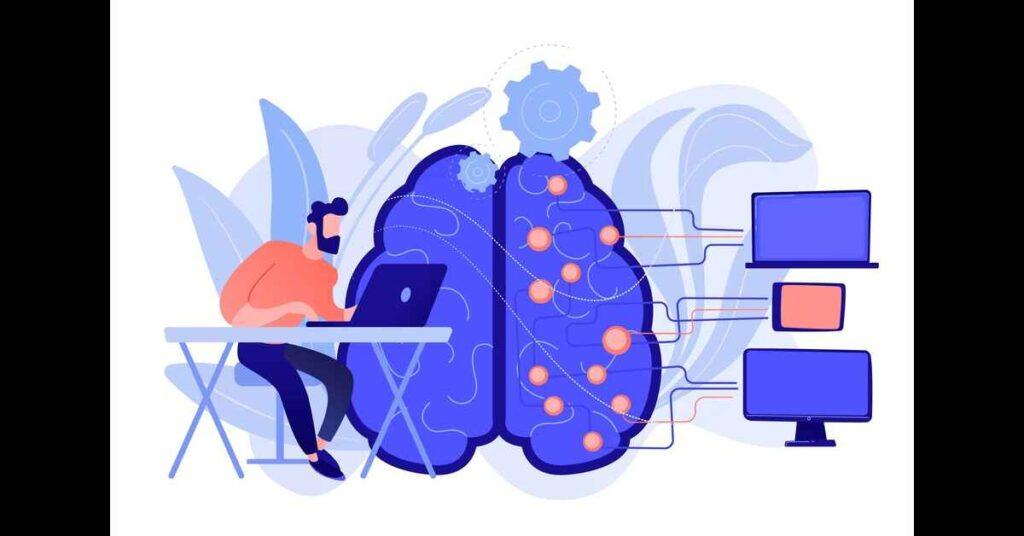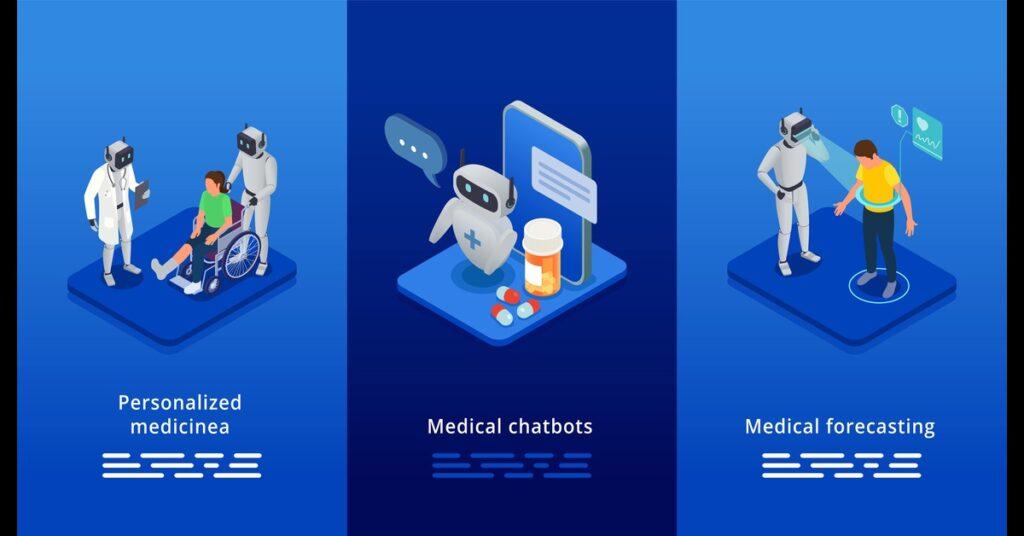Artificial General Intelligence vs Artificial Intelligence: Navigating the Spectrum of Machine Intelligence
The contrast between Artificial General Intelligence (AGI) and Artificial Intelligence (AI) is a source of light in the rapidly changing field of technology, pointing the way toward advancement and creativity. Despite their similarities, these two ideas mark different turning points in the development of machine intelligence, each with special powers and consequences.
Our daily lives are already intertwined with artificial intelligence (AI), which powers medical diagnosis, recommendation engines, and virtual assistants. However, our goal is to imitate and outperform human intelligence through the development of Artificial General Intelligence (AGI), moving beyond the particular fields of AI to attain flexibility. and problem-solving akin to human cognition.
Understanding the nuances of the debate over Artificial General Intelligence vs Artificial Intelligence goes far beyond semantics; it has significant ramifications for the course of technical advancement, moral issues, and the potential disruption of many industries and social norms. We will examine these two ideologies’ historical turning points, technological difficulties, real-world uses, and prospects for the future.
Table of Contents
Understanding Artificial Intelligence (AI).
Artificial intelligence (AI) is transforming many facets of our lives as a revolutionary technology. In this section, we will delve into the concept of AI, explore its real-world applications, and highlight its significance in the context of Artificial General Intelligence vs Artificial Intelligence.
What is Artificial Intelligence?
The simulation of human intelligence in computer systems is known as artificial intelligence or AI for short. At its core, AI aims to enable machines to mimic human cognitive functions, such as learning, problem-solving, reasoning, and decision-making. It encompasses a wide range of techniques and approaches that allow computers to perform tasks that typically require human intelligence.
The capacity of AI to learn from data is one of its core features. Machine learning, a subset of AI, enables systems to improve their performance over time by analyzing and adapting to new information. This learning process is essential for AI to excel in a variety of applications.
Real-World Applications of AI.
AI has found applications in numerous industries and has the potential to revolutionize how we work, live, and interact with technology. Here are some real-world examples and use cases of AI:
1. Natural Language Processing (NLP): AI-powered NLP is behind virtual assistants like Siri and chatbots. It enables machines to understand and respond to human language, making interactions with technology more conversational.

2. Computer Vision: AI-driven computer vision is used in facial recognition technology, medical image analysis, and autonomous vehicles. It enables robots to “see” and understand visual information similarly to people.

3. Healthcare: AI in healthcare uses patient data, AI helps with disease diagnosis, forecasting, and customized therapy regimens. Large volumes of medical data can be analyzed by it more rapidly and precisely than by humans.
4. Finance: In the financial sector, AI algorithms are employed for fraud detection, algorithmic trading, and risk assessment. These applications enhance security and improve decision-making.
5. E-commerce: AI is used to recommend products to online shoppers based on their browsing and purchase history. Sales and user engagement are increased by this customization.
6. Manufacturing: AI-powered robots and automation systems enhance efficiency and precision in manufacturing processes, leading to increased productivity and quality control.
The Significance of AI in Artificial General Intelligence vs Artificial Intelligence.
Artificial intelligence (AI) is a key topic in the debate about Artificial General Intelligence vs Artificial Intelligence. Artificial intelligence pertains to the present-day status of artificial intelligence, defined by specialized, limited AI systems developed for specific objectives.
Understanding AI is crucial as it provides the foundation upon which the concept of Artificial General Intelligence (AGI) is built.
In the context of this comparison, AI serves as a benchmark, illustrating the capabilities and limitations of current machine intelligence. AGI, on the other hand, aspires to replicate human-level intelligence across a wide range of tasks, surpassing the boundaries of specialized AI systems.
Exploring Artificial General Intelligence (AGI).
In the realm of artificial intelligence (AI), Artificial General Intelligence (AGI) stands out as a concept that holds immense promise and fascination. In the context of Artificial General Intelligence vs. Artificial Intelligence, we shall define AGI, highlight its salient features, and make comparisons between AGI and traditional AI in this section.
Defining Artificial General Intelligence (AGI).
Artificial General Intelligence, often referred to as AGI or strong AI, represents the pinnacle of AI development. It can be defined as a form of machine intelligence that possesses human-like cognitive capabilities, enabling it to understand, learn, and perform a wide variety of tasks at or beyond human levels.
Unlike conventional AI, which is designed for specific tasks or domains, AGI aspires to generalize its intelligence across diverse domains. It seeks to emulate human-like thinking and reasoning across various activities. In essence, AGI aims to be adaptable and versatile, much like the general intelligence exhibited by humans.
Key Characteristics and Differences Compared to (AI).
To distinguish AGI from AI and have a deeper understanding of it, let’s examine several essential features:
1. Versatility and Adaptability: AGI exhibits a high degree of versatility. It can switch between tasks with ease and doesn’t need a lot of reprogramming or training. Conventional AI systems, on the other hand, are specialized and limited to doing specific jobs well.
2. Learning and Reasoning: AGI can learn from experiences and adapt its knowledge and reasoning abilities accordingly. It can draw inferences, solve complex problems, and make decisions across various domains.
3. Human-Level Competence: The ultimate goal of AGI is to achieve human-level competence across a broad range of tasks. This includes understanding natural language, recognizing patterns, and demonstrating common-sense reasoning.
4. Autonomy: Artificial general intelligence (AGI) can function autonomously, which enables it to make decisions and improve itself under changing circumstances.
5. Ethical and Philosophical Issues: AGI brings up many important ethical and philosophical issues, including doubts regarding its capacity for making decisions, the possibility of bias, and its effects on society.
The Significance of Artificial General Intelligence vs. Artificial Intelligence.
In the debate between Artificial General Intelligence vs Artificial Intelligence, AGI refers to the goal of creating AI that can compete with human intelligence in many contexts. Although AI has advanced significantly in specialized applications, AGI is the pursuit of an intellect that can transcend the limited capabilities of AI systems.
Key Differences Between AI and AGI.
When discussing Artificial General Intelligence vs Artificial Intelligence, it’s essential to delve into the fundamental distinctions that set these two forms of machine intelligence apart. In this section, we will explore key differences between Artificial Intelligence (AI) and Artificial General Intelligence (AGI) with a focus on factors such as adaptability, learning capacity, and problem-solving.
Adaptability and Specialization.
One of the most significant differences between AI and AGI lies in their adaptability and specialization:
1. AI (Artificial Intelligence): AI is specialized intelligence designed for specific tasks or domains. It does extremely well at predefined tasks like chess playing, image recognition, and natural language processing. AI systems are optimized for their specific applications but lack the versatility to perform tasks outside their designated scope.
2. AGI (Artificial General Intelligence): AGI, on the other hand, possesses the remarkable ability to adapt to diverse tasks. It doesn’t require a lot of retraining or specific training to learn and apply knowledge across multiple fields. This adaptability mirrors the general intelligence exhibited by humans.
Learning Capacity and Autonomy Learning capacity and autonomy are essential aspects that differentiate AI from AGI.
1. AI (Artificial Intelligence): AI systems rely on training data and predefined algorithms to perform tasks. They do not possess autonomous learning capabilities. AI requires human intervention for updates, modifications, and new task assignments.
2. AGI (Artificial General Intelligence): AGI can learn autonomously from its experiences. It can independently learn new abilities, adjust to changing circumstances, and improve performance. This autonomy makes AGI more versatile and self-sustaining.
Problem-Solving and Generalization.
Another significant difference lies in problem-solving and generalization:
1. AI (Artificial Intelligence): AI excels in solving specific problems within its domain. Based on medical photographs, for example, AI algorithms can diagnose certain medical conditions; however, they are not able to generalize their conclusions to other conditions that are not included in their training data.

2. AGI: can apply its problem-solving abilities in a broader sense. It is capable of applying its knowledge and reasoning skills to a variety of tasks, including ones it has never experienced before. An indication of intellect similar to that of humans is this generalization.
Current and Practical AI Applications.
Artificial Intelligence (AI) has transcended its status as a futuristic concept and has become an integral part of numerous industries. In this section, we will explore real-world examples of AI applications across various domains, highlighting how AI is currently employed to address specific problems. While our focus keyword is Artificial General Intelligence vs Artificial Intelligence, it’s important to understand the practical applications of AI in the present.
Healthcare
AI is making significant strides in healthcare, revolutionizing the way medical professionals diagnose, treat, and manage patient care. Here are some practical applications:
1. Medical Imaging: AI algorithms can analyze medical images such as X-rays, MRIs, and CT scans with exceptional precision, assisting radiologists in early disease detection.
2. Drug Discovery: AI accelerates drug discovery by analyzing vast datasets to identify potential drug candidates, reducing the time and cost of bringing new medications to market.
3. Predictive analytics: AI algorithms forecast health outcomes and the course of diseases, assisting medical professionals in resource allocation and enhancing patient care.
Finance
In the financial sector, AI is utilized for its data analysis and decision-making capabilities.
1. Algorithmic Trading: AI-powered algorithms execute high-frequency trades by analyzing market data and identifying optimal trading opportunities.
2. Fraud Detection: Artificial intelligence uses transaction pattern analysis to identify fraudulent activity, assisting financial institutions in stopping illegal transactions.
3. Credit Scoring: AI assesses credit risk by analyzing an individual’s financial history, improving the accuracy of credit decisions.
E-commerce
AI enhances user experiences and boosts sales in the e-commerce industry:
1. Systems for product recommendations: AI algorithms examine user behavior and preferences to offer tailored product recommendations that boost conversion rates.
2. Chatbots: AI-powered chatbots handle customer inquiries and provide real-time support, improving customer satisfaction.
Manufacturing
AI is transforming manufacturing processes to increase efficiency and quality:
1. Robotic Automation: AI-powered machines perform monotonous jobs, cutting down on mistakes and increasing output velocity.
2. Predictive Maintenance: AI predicts when equipment is likely to break, enabling preventive maintenance and reducing downtime. This is known as predictive maintenance.
Transportation
AI plays a crucial role in the transportation industry, especially in the development of autonomous vehicles:
1. Autonomous Driving: AI algorithms power self-driving cars, enhancing safety and reducing accidents caused by human error.
Challenges in Achieving AGI.
The search for Artificial General Intelligence (AGI), sometimes known as strong AI, is a difficult undertaking fraught with moral and technical difficulties. We shall examine the challenges faced by researchers in creating AGI in this section, as well as the restrictions and ethical issues surrounding Artificial General Intelligence.
Technical Challenges.
1. Complexity of Human intellect: Perception, logic, creativity, problem-solving, and emotion are all complicated parts of human intellect. It is extremely difficult for AGI systems to replicate this complexity.
2. Data and Computational Power: Large volumes of data and processing power are required for artificial general intelligence (AGI) to learn and adapt. Access to sufficient data and computing resources is a significant technical challenge.
3. Transfer Learning: Enabling AGI to transfer knowledge from one domain to another seamlessly is a technical puzzle. It should be difficult for AGI to generalize what it has learned, just as humans do.
4. Robustness and Safety: Ensuring the safety and robustness of AGI systems to prevent unintended consequences or malicious uses is a paramount concern. AGI must make reliable decisions even in uncertain situations.
Ethical and Philosophical Considerations.
1. Control and Autonomy: If AGI systems develop a high degree of autonomy, it will be interesting to see who is in charge of them and how they reach decisions. Ensuring human control and ethical behavior is a significant ethical challenge.
2. Fairness and Bias: AGI may carry over biases from training sets, which could result in unfair results.
3. Transparency and Explainability: Understanding how AGI arrives at decisions is crucial for accountability and trust. Making AGI systems transparent and explainable is a challenge for both developers and users.
4. Job Displacement: The widespread deployment of AGI systems could lead to job displacement and economic disruption. Preparing for these societal changes is an ethical dilemma.
The Evolution of AI and AGI.
The journey of Artificial Intelligence (AI) and the pursuit of Artificial General Intelligence (AGI) have seen remarkable progress and significant milestones.
Early AI: The Birth of Artificial Intelligence.
The roots of AI can be traced back to the mid-20th century when researchers began exploring the concept of machines that could simulate human intelligence.
1. 1950s-1960s: The term “Artificial Intelligence” was coined, and early AI programs, like the Logic Theorist and General Problem Solver, demonstrated problem-solving abilities.
2. 1970s-1980s: The development of expert systems marked this era, where AI was applied to narrow domains such as medical diagnosis and language translation.
AI Winter and Narrow AI’s Ascent.
Due to naive assumptions and technological limitations, AI experienced an “AI Winter” of inertia after its first exuberance. But the industry recovered, and Narrow AI emerged.
1. 1980s-1990s: Narrow AI, also known as weak AI, gained prominence. These systems excelled in specific tasks, like speech recognition and chess-playing.
2. 2000s-2010s: Breakthroughs in machine learning and deep learning reignited interest in AI. Applications like virtual personal assistants (Siri, Alexa) and recommendation systems (Netflix, Amazon) have become commonplace.
Contemporary AGI Efforts.
While narrow AI keeps progressing, artificial general intelligence (AGI) is still a long-term objective. Prominent recent initiatives have included:
1. OpenAI’s GPT Series: The development of Generative Pre-trained Transformers (GPT) represents a significant leap in natural language processing, showcasing AGI-like text generation capabilities.
2. DeepMind’s AlphaZero: AlphaZero showed promise for AGI-like adaptation by exhibiting superhuman performance in Go, shogi, and chess.

3. Ethical Considerations: Transparency, justice, and safety are among the ethical issues surrounding artificial intelligence that are receiving more and more attention.
The Significance of Evolution in Artificial Intelligence vs Artificial General Intelligence.
When viewed in the context of Artificial Intelligence vs Artificial General Intelligence, the historical history of AI demonstrates the transition from specialized, narrow AI to the current attempts in AGI. While AGI stands for the desire to reproduce and surpass human-like intelligence across several fields, AI represents the status of machine intelligence as it exists.
Implications and Future Outlook.
The advancement of artificial intelligence (AI) and the pursuit of artificial general intelligence (AGI) have a big impact on many industries as well as society.
Impacts on Society and Industries.
1. Labor and Employment: The widespread adoption of AI and AGI may lead to shifts in the job market. While AI can automate routine tasks, AGI has the potential to perform complex roles. This transformation may necessitate reskilling and upskilling for the workforce.
2. Healthcare: AI and AGI can improve healthcare by enabling early disease diagnosis, personalized treatment plans, and drug discovery. These technologies may enhance patient outcomes and reduce healthcare costs.
3. Education: By customizing educational content to meet each student’s needs, AI-driven personalized learning platforms can raise the standard of instruction.
4. Autonomous Transportation: Self-driving cars and automated logistics can revolutionize transportation, reducing accidents and congestion. AGI-powered systems may further enhance safety and efficiency.
Future Trajectory of AI and AGI.
1. AI: It is anticipated that AI will continue to advance quickly and become more integrated into many facets of our lives. Narrow AI will become more specialized and efficient, benefiting industries like healthcare, finance, and manufacturing.
2. AGI: Achieving AGI remains a long-term goal. Even if a lot of work has been done, more versatile and problem-solving AGI-like systems might emerge in the future.
3. Ethical Aspects: AI and AGI’s ethical aspects will become more prominent. It will be crucial to guarantee accountability, justice, and transparency in these technologies.
4. Regulation and Governance: To handle the moral, legal, and security implications of AI and AGI, governments and organizations will probably create rules and policies.
Conclusion.
The distinction between Artificial General Intelligence vs Artificial Intelligence bears important implications and promises in the dynamic world of technology. As we draw to a close, it becomes abundantly evident that AI and AGI represent two separate stages in the development of artificial intelligence, each with unique traits and ramifications.
Artificial Intelligence (AI), the current equivalent of machine intelligence, has already profoundly altered our lives. It contains specialized systems and algorithms designed to perform well at specific tasks, such as natural language processing and medical diagnostics. Artificial Intelligence is a vital tool for increasing productivity, creativity, and efficiency in a wide range of industries.
In context Artificial General Intelligence vs Artificial Intelligence both are important in the constantly changing world of technology. While AGI depicts the futuristic state of versatile, human-like machine reasoning, AI exemplifies the state of specialized machine intelligence as it already exists. Artificial intelligence (AI) is already changing sectors, expanding our quality of life, and facilitating better decision-making. If developed, AGI could lead to previously unimaginable complexity and improvements in how humans view and use technology.
Proudly powered by WordPress
Image Courtesy of Vectorjuice
Image Courtesy of rawpixel
Image Courtesy of Immanuel Giel
Image Courtesy of Macrovectoe_Official




